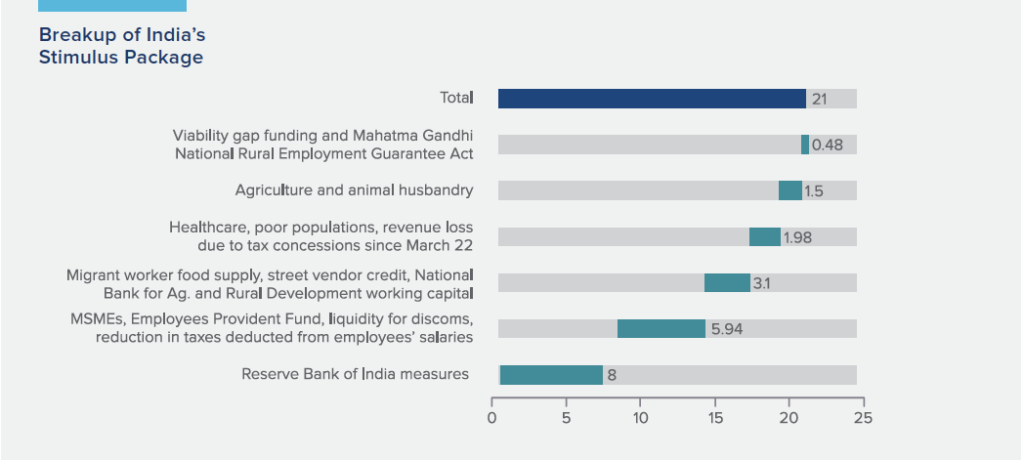Originally published on the Rocky Mountain Institute’s website.
By Ryan Laemel
This article was co-authored by Jagabanta Ningthoujam.
We at Rocky Mountain Institute have been working in India for the past five years, supporting government and business leaders with the country’s energy transition. Yet a few of us have just started to call Delhi our home. Over the past year we have witnessed the challenging problems of Delhi’s infamous congestion and toxic air pollution—the latter of which has led to 4 in 10 of the city’s children suffering from air pollution-related respiratory ailments.
What nature really is and how we screwed it up.
This is Dhauladhar mountain range of Himachal, visible after 30 yrs, from Jalandhar (Punjab) after pollution drops to its lowest level. This is approx. 200 km away straight. #Lockdown21 #MotherNature #Global healing. pic.twitter.com/cvZqbWd6MR
— Diksha Walia (@Deewalia) April 3, 2020
However, the past few months have been a pleasant change for the environment: blue skies have become more common. Although we all know that the circumstances leading to these moments of clean air are unique, they have nonetheless given us a vision of what clean, green urban development might look like.
This vision of blue skies can be contrasted with the significant socioeconomic consequences resulting from both the COVID-19 pandemic and the measures to contain its spread. The challenge is: How do we make this renewed vision a long-term reality? What is the path to both blue skies and economic recovery?
To address the challenges of the pandemic, public and private sector leaders globally are considering short-term and long-term interventions to support economic recovery. In this context, India recently announced a US$266 billion relief package—one of the largest stimulus packages among emerging markets. Although recovery efforts will pose challenging tradeoffs between the economy, environment, and social equity, the opportunity to rebuild offers a unique chance to ensure a cleaner and greener future for the country.
Four Principles for Green Recovery
In our recent analysis we advocate for prioritizing a clean energy transition in India’s recovery effort, with a focus on opportunities in the transport and power sectors. Our new report, Towards a Clean Energy Economy: Post-COVID-19 Opportunities for India’s Energy and Mobility Sectors, identifies principles and strategic opportunities for the country’s leaders to continue to work towards building a clean, resilient, and least-cost energy future for India.
These opportunities present significant economic and environmental benefits. India’s transport sector can save 1.7 gigatons of cumulative carbon dioxide emissions and avoid about 600 million tons of oil equivalent in fuel demand by 2030 through shared, electric, and connected passenger mobility and cost-effective, clean, and optimized freight transport. Significant savings are also achievable in the power sector through the adoption of renewable energy, energy storage, efficiency, and flexibility.
In the report, we lay out four principles that can serve as a framework for policymakers and other key decision makers considering programs to support India’s clean energy future:
1) Invest in least-cost energy solutions
2) Support resilient and secure energy systems
3) Prioritize efficiency and competitiveness
4) Promote social and environmental equity
Green Recovery Opportunities in Mobility and Power
The major opportunities that we have identified in the transport sector include making public transport safe, enhancing and expanding non-motorized transport infrastructure, and reducing vehicle kilometers travelled through work-from-home where possible. We also see an opportunity to support national strategies to adopt electric vehicles in the freight and passenger segments, and to make India an automotive export hub.
In the power sector, the main priorities include improving electricity distribution business and operations, enabling renewables and distributed energy resources, and promoting energy resilience and local manufacturing of renewable energy and energy storage technologies.
A Phased Approach to Stimulus and Economic Recovery
It is important to view these opportunities through a temporal framework to help decision makers prioritize what to do and when to do it at a time when there are more competing priorities than ever.
Strategic trajectory for stimulus packages: Fix it first, replace and extend, and transform and grow.
As the economy returns to some degree of normal, the focus should shift towards replacing and extending programs that encourage a clean energy transition. Examples include the continuation of the Department of Heavy Industry’s US$1.4 Billion FAME II scheme. The electricity sector should also focus on a cost-reflective tariff and better pricing of externalities to enable a financially viable distribution sector.

Finally, the country needs to sustain its longer-term commitment to growth, transformation, and resilience, leveraging its robust manufacturing capability, large domestic markets, and rapidly evolving innovation ecosystem. Initial public investments in R&D, design, manufacturing, and the export of vehicles and components, especially for EVs and batteries, can mobilize private funding and provide clarity to the business community. Necessary investment in a clean energy portfolio aiding renewable integration, demand response, and distributed energy resources will also position the electricity sector for long-term transformation.

Over the next decade, India’s passenger mobility demand (in vehicle kilometers traveled), freight transport demand (in ton-kilometers), and electricity generation will all more than double. Without significant changes, the environmental and public health impacts of India’s carbon emissions and air pollution will become more severe. As India’s leaders look to rebuild the country’s economy, a clean energy economy is now more important than ever. If we can build back better, we might just see a world where blue skies are the norm.

Image and related article courtesy of CleanTechnica. Ola Electric Acquires Etergo, Dutch Company Behind Electric AppScooter
Featured Image courtesy of #1 Renault to Launch Electric Car in India by 2022
Image courtesy of Future Trends


